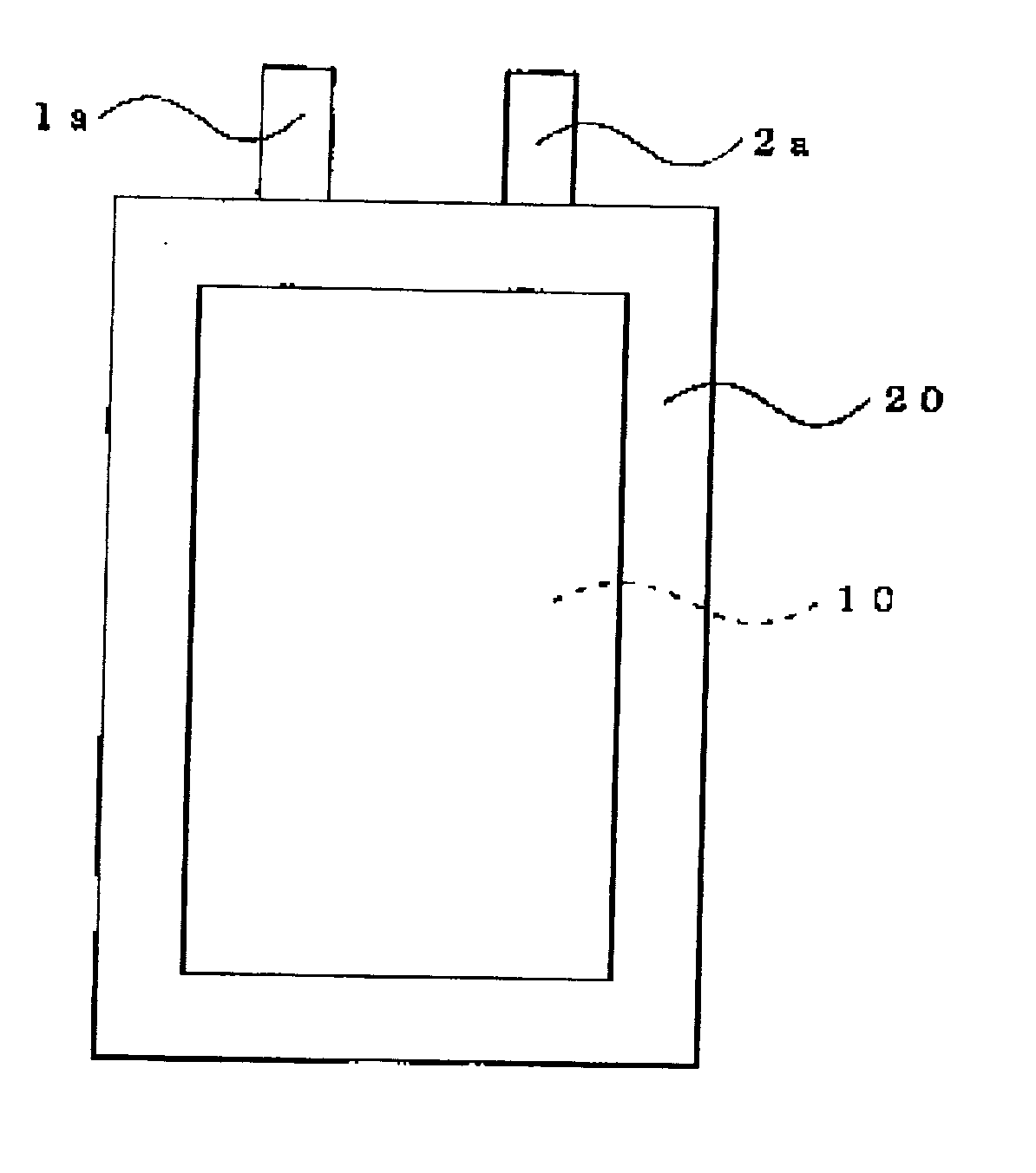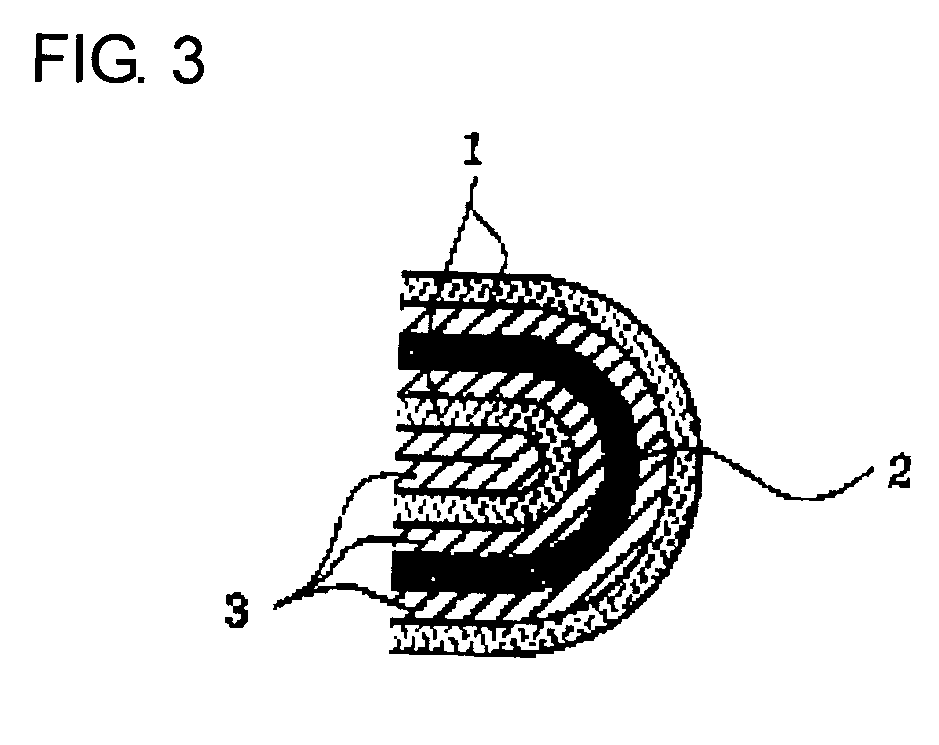Nonaqueous electrolyte secondary battery and nonaqueous electrolytic solution for nonaqueous electrolyte secondary battery
a nonaqueous electrolyte and secondary battery technology, applied in the direction of non-aqueous electrolyte cells, cell components, electrical apparatus, etc., can solve the problems of insufficient capacity of the electrolyte active material using graphite material, inability to meet such requirements, and high power consumption of multifunctional equipment, etc., to suppress side reactions, improve charge and discharge cycle characteristics, and improve cycle characteristics
- Summary
- Abstract
- Description
- Claims
- Application Information
AI Technical Summary
Benefits of technology
Problems solved by technology
Method used
Image
Examples
example 1
Preparation of the Positive Electrode
[0044]The positive-electrode active material used was lithium cobalt oxide represented by LiCoO2 (an average particle diameter of 13 μm, a BET specific surface area of 0.35 m2 / g) having a surface fixed with a zirconium compound. The lithium cobalt oxide having the surface adhered with the zirconium compound can be produced by adding the zirconium compound into the raw material and burning the mixture.
[0045]The positive-electrode active material, a carbon material powder as a conductive agent, and polyvinylidene fluoride as a binder were mixed so as to have a mass ratio of 95:2.5:2.5. Into the mixture, an N-methyl-2-pyrrolidone solution was added and kneaded to prepare a positive electrode mixture slurry.
[0046]Next, an aluminum foil positive electrode collector having a thickness of 15 μm, a length of 402 mm, and a width of 50 mm was coated with the positive electrode mixture slurry on one side of the positive electrode collector in a length of 34...
example 2
[0061]A nonaqueous electrolyte secondary battery was prepared in the same manner as in Example 1 except that 1,12-diisocyanatododecane (DMDI) was used as the diisocyanate compound in place of HMDI.
example 3
[0062]A nonaqueous electrolyte secondary battery was prepared in the same manner as in Example 1 except that the content of LiPF2O2 was 0.5% by mass in the nonaqueous electrolytic solution.
PUM
 Login to View More
Login to View More Abstract
Description
Claims
Application Information
 Login to View More
Login to View More - R&D
- Intellectual Property
- Life Sciences
- Materials
- Tech Scout
- Unparalleled Data Quality
- Higher Quality Content
- 60% Fewer Hallucinations
Browse by: Latest US Patents, China's latest patents, Technical Efficacy Thesaurus, Application Domain, Technology Topic, Popular Technical Reports.
© 2025 PatSnap. All rights reserved.Legal|Privacy policy|Modern Slavery Act Transparency Statement|Sitemap|About US| Contact US: help@patsnap.com



